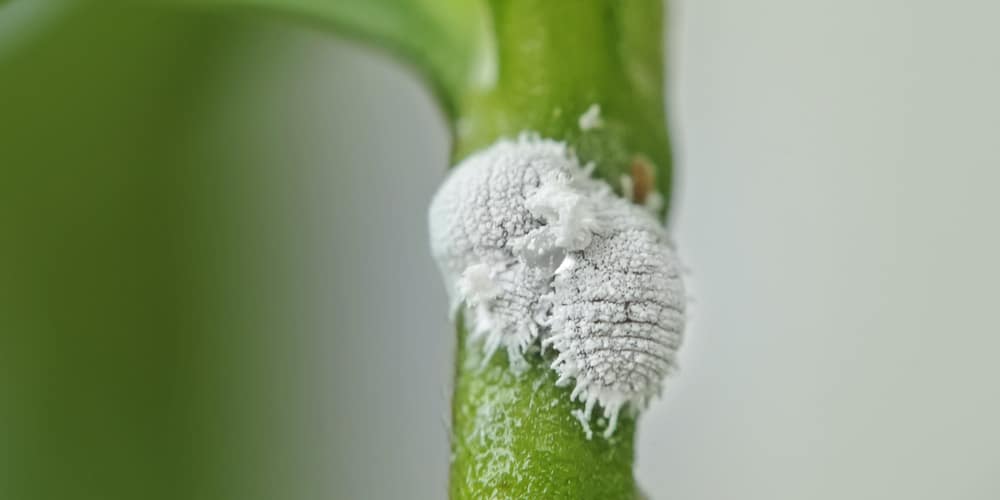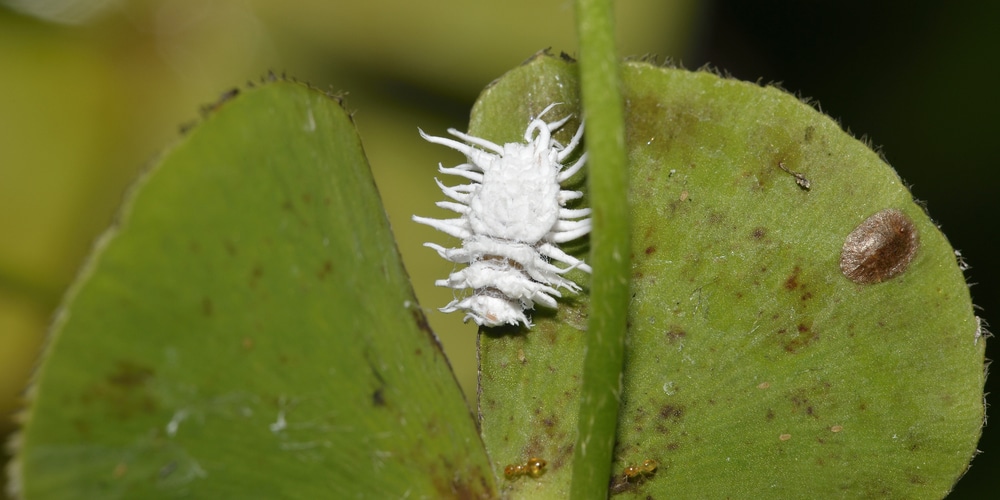Mealybugs can affect the health of your Jade plant, causing yellowing of leaves and stunted growth. Severe infestations can also cause plants to dieback. They also leave traces of sap on the plant’s foliage, which can provide a growth medium for sooty mold fungus, which is unsightly and may interfere with photosynthesis. Let’s look at how to identify and get rid of mealybugs on a ade plant.
Mealybugs are common pests found on indoor plants. They can affect jade plants and feed on sap by inserting their long slender mouth-parts into the plant’s tissue.
What are mealybugs?

Mealybugs are soft-bodied insects covered with white, waxy fluff. They are usually found beneath leaves or in other hidden places on the plant, although you may discover them crawling across leaf surfaces.
Mealybugs don’t usually cause serious harm as long as the plants are not stressed. However, mealybugs may transmit plant diseases from one houseplant to another.
If you have a diseased plant or a jade plant that’s under stress from lack of water, it is more likely to suffer severe damage from a mealybug infestation. In this case, it may be necessary to discard the plant and treat the remaining plants in your home.
Mealybugs on Jade Plant, what to do

Mealybugs can reproduce rapidly under favorable conditions, especially if there is not an effective predator population to keep them under control. Check all of your plants for mealybugs; they can be easily spread from one houseplant to another on clothing or by crawling. Since mealybugs are so common, you should also check any new plants that you bring home.
Isolate any plants that are affected. Even if the population of mealybugs is not very large, they should be treated promptly to prevent the insects from spreading onto healthy plant tissue. Here’s what to do if you’ve recently found mealybugs on your jade plant:
Check for Egg Sacs
Check for white cottony egg sacs in the nooks and crannies of the leaves and stem joints. Carefully remove any eggs you find with a toothpick or tweezers before applying an insecticide. This will help to prevent the eggs from hatching and affecting the plant.
You can also remove insects from infested leaves with a pair of tweezers, being careful to remove the entire mealybug. Place them in hot water or put them in alcohol or hand sanitizer for 1 minute to ensure they are dead. Discard where pets and children cannot get them.
Use Insecticidal Soaps
Insecticidal soaps, horticultural oils, or neem oil can be used to control mealybugs on a jade plant. These products should be applied repeatedly until the problem is under control.
You can make your own insecticidal soap by following these instructions:
1. Mix 1 tsp of liquid soap in a cup of water.
2. Put the mixture into a spray bottle and shake well to combine.
3. Spray your jade plant and then wipe each leaf using a damp paper towel or cotton wool. Ensure you cover all parts of the plant and pay particular attention to the undersides of the leaves, as this is where eggs are hidden.
Use Neem Oil
Neem oil is a great way to get rid of mealybugs on a jade plant.
You may like to apply neem oil rather than insecticidal soap. Follow the instructions on the label for safe usage. Neem works by causing mealybugs to dry out and die. Please be aware that neem oil will stain fabrics and other surfaces it comes in contact with, so care should be taken when applying.
Conclusion
Mealybugs are small, soft-bodied insects that suck the sap from plants. They are related to scale insects and have similar feeding habits. All indoor gardeners should be able to recognize mealybugs and know how to get rid of them.
Pick insects and egg sacs off your plants using tweezers and carefully dispose of the insects where they won’t affect other plants. You can also use an insecticidal spray, homemade insecticidal soap, or neem oil to kill the mealybugs on your jade plant.
Prevention is the best way to keep your houseplants pest-free. The most important thing you can do to prevent infestations of indoor pests is to make sure your houseplants are healthy and getting the right amount of light, water, and fertilizer.
Related: How to get rid of clover mites